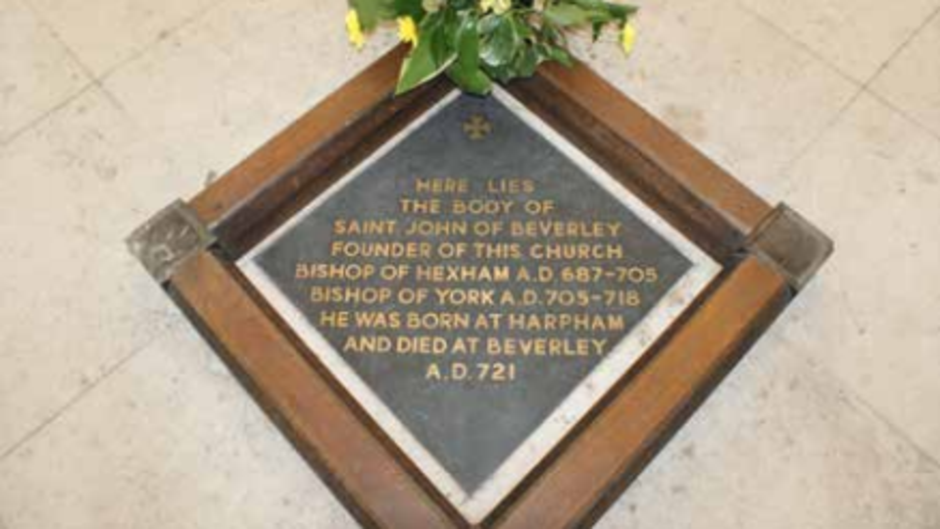Agincourt and St John of Beverley
Wed 21st October 2015
On the 25th October, England celebrates the 600th anniversary of King Henry V’s victory against a numerically-superior French army at Agincourt. This win was attributed to the blessings afforded on the English army by St John of Beverley, whose banner was used to rally the troops, and whose Feast of Translation is celebrated on October 25th. St John was born in Harpham. He trained as a priest in Canterbury, becoming Bishop of Hexham in 687 and then York in 705. He was also a member of the Whitby community and some sources say he ordained his friend, Bede, as deacon and priest. He founded Beverley by building the first structure here, a monastery, on the site which is now occupied by Beverley Minster. John was a popular teacher, caring to his many pupils and the wider community. John spent his last days ‘in a manner pleasing to God’ at the monastery. He died in 7th May 721 and was buried in the monastery chapel. He was canonized in 1037. John was not only renowned for his miracles of healing but also for his reputation of granting victory in battle. In 937, King Athelstan visited St John’s tomb in Beverley to ask for his prayers in his forthcoming battle against the Scots, which was won. In thanksgiving, the King bestowed collegiate status on the monastery which meant the Canons were expected to go out to preach and teach in the neighbourhood (which made the church into a Minster), he gave the Canons land to support the Minster and he gave it the right of Sanctuary. The prosperity of Beverley owes much to St John!
In 1138, St John’s banner was one of the banners which was used to inspire the Yorkshiremen fighting the invading Scots at The Battle of the Standard near Northallerton. From that time on, levies for Yorkshire armies would be nullified as long as a man was sent with the banner. Edward I, Edward II, Edward III and Henry IV as well as Henry V used the banner in their campaigns. John was canonized in 1037 when he became St John of Beverley. After St John’s death, the Minster building was redeveloped until eventually it became the building we know and love today.
His remains were ‘translated’ –that is moved to his current tomb on October 25th 1307. On the day of the Battle of Agincourt in 1415, it is said that blood and oil were seen running from the tomb. Henry V visited Beverley in 1420, made St John a patron of the royal family and decreed that St John’s feast-day should be celebrated throughout England. On May 7th, or the Sunday closest to May 7th, St John is celebrated by the Minster with welldecoration and services. But on October 25th 2015, his memory will be celebrated in King Henry V’s great victory at Agincourt.

